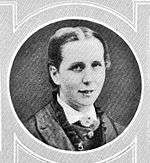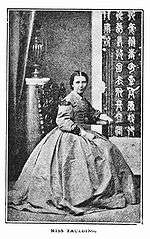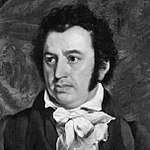Jennie Faulding Taylor
Jane Elizabeth "Jennie" Faulding Taylor (6 October 1843 – 31 July 1904), was a British Protestant missionary to China with the China Inland Mission. She pioneered the work of single women missionaries in China and eventually married the founder of the mission, James Hudson Taylor, after the death of his first wife, Maria Jane Dyer. As Taylor's wife, she assumed many roles within the mission agency when Taylor was overseas—acting at times as a home director for the mission. She encouraged women, both married and unmarried, to participate in the work of the China Inland Mission in ways that had previously only been reserved for male missionaries.
Jane Elizabeth Faulding | |
|---|---|
 Jennie Taylor | |
| Born | 6 October 1843 England |
| Died | 31 July 1904 (aged 60) Les Chevalleyres, Switzerland |
Early life in London

Jane Elizabeth Faulding was the daughter of a piano manufacturer in London. She was an 1865 graduate of the Home and Colonial Training College along with her friend, Emily Blatchley. She attended the weekly prayer meeting at the home of Hudson & Maria Taylor in the East End of London in 1865. She was influenced by the Taylors and their book: "China's Spiritual Need and Claims", that spoke of the desperate need for the Gospel message to be brought to the Chinese before they died "without God and without hope in the world".
The youngest missionary
When the Taylors were recruiting missionaries to go with them back to China, Faulding volunteered to accompany the 15 other candidates who were all as inexperienced as herself. She was the junior member of the Lammermuir Party, the largest party of Protestant missionaries ever to sail to China in 1866, but she quickly proved herself useful.
_(14761904716).jpg)
Pioneering work among women
On the journey, they weathered two typhoons and a near shipwreck. Once in China, they donned Chinese clothes and ventured down the Grand Canal, looking for a place to settle down to mission work. It caused a scandal among the other Westerners in China to see a young single woman like Faulding adopt the Chinese dress, which was considered a compromise with an idolatrous culture. However, Taylor was undeterred in encouraging his missionaries to "adopt all things not sinful that were Chinese in order to save some".
In Hangzhou, Faulding proved the value of being an unmarried female, as her daily walks around the neighborhood gave her opportunities to be invited in by the Chinese women, who did not feel threatened as they might have by a foreign man.
After she had been in China for five years, she was given a furlough at the request of her parents. Taylor accompanied her home in 1871. She had keenly felt the loss of Maria Taylor, her friend and mentor, the year previously. On the way back to England, Hudson proposed marriage. She accepted on the condition of her parents' approval, which was not easily obtained. In November of the same year they were married. She became the stepmother to Taylor's four surviving children and a successor to Maria as the "Mother of the Mission". Together, they had two children of their own and adopted an orphaned daughter of a missionary.
Leading from the shadows
The news of the terrible Great North China Famine of 1877–78 in Shanxi Province motivated Faulding to go there with two single women as part of a relief team – when no men could be spared to accompany them on their journey and her husband could not go, himself. She began an orphanage in Taiyuan, and distributed aid to the starving people there.
Faulding worked alongside her husband until the end of her life. They traveled across the globe many times recruiting missionaries and visiting mission stations in China. She died of breast cancer in Les Chevalleyres, Switzerland in 1904. Hudson remained with her at the end of her life.
Quote
How I wish that burning soul-stirring words could be written, words that would induce wrestling prayer and earnest effort. . . . How few are those who live for souls as worldly men live for riches, from year end to year end, first thing in the morning, last thing at night, every obstacle made to give way by persevering effort. . . . People speak of the progress of truth being slow, and in the half-truth hide the Church’s guilt
Chronology
Birth to First Time in China 1866
- Born in England to William Joseph & Harriet Faulding
- Sailed to China (via the Cape of Good Hope) aboard the Lammermuir with James Hudson Taylor 26 May 1866 from East India Docks, London, England
- Arrived in China aboard the Lammermuir 29 September 1866 in Shanghai, China
- Settled with the Lammermuir party December 1866 in 1 Xin Kai Long (New Lane), Hangzhou, Zhejiang, China
Furlough and marriage
- Sailed to Guangzhou on furlough with James Hudson Taylor aboard the MM Volga on 5 August 1871 in Shanghai, China
- Sailed to Marseilles via Saigon, Ceylon, Aden, Suez aboard the MM Ava after 5 August 1871 in Guangzhou, Guangdong, China
- Arrived in England 25 September 1871 in from Marseilles, France (via Paris to London)
- Married to James Hudson Taylor, 28 November 1871 in Regent's Park Chapel, London, England
- Moved 15 January 1872 to 6 Pyrland Road, Islington, London, England
Return to China
- Sailed to China aboard the M M Tigre with Hudson Taylor, 9 October 1872 in Marseilles, France (via Paris from London)
- M M Tigre arrived 28 November 1872 in Shanghai, China
- Baby son (twin) Taylor born 13 April 1873 in Nanjing, Jiangsu, China
- Baby daughter (twin) Taylor born 14 April 1873 in Nanjing, Jiangsu, China
Raising a family in England
- Sailed to England on furlough with Hudson Taylor, 30 August 1874
- Arrived 15 October 1874, England
- "Dai Cun-xin" Ernest Hamilton Taylor born 7 January 1875, 2 Pyrland Road, Islington, London
- Amy H. Taylor born 7 April 1876, Islington, London
- Mary Jane Bowyer Duncan adopted, before 25 December 1877, England
Pioneering work in China
- Sailed to China without Hudson for famine relief work 2 May 1878
- Led the advance of women missionaries to the far interior about September 1878 in Shanxi, China
- Arrival and reunion with Hudson Taylor, 8 May 1879 in Yantai (Cheefoo), Shandong, China
- Sailed to England 13 October 1880
- Reunion with Hudson 21 December 1890 in Shanghai, China
- Arrived with Hudson Taylor, March 1892 in Vancouver, British Columbia, Canada
- Sailed to England via Canada, 10 May 1892
- Arrived, 26 July 1892 in England
- Sailed to China via US aboard the RMS Germanic with Hudson Taylor, 14 February 1894 from Liverpool & Queenstown, England
- Arrived aboard the RMS Germanic, 24 February 1894 in Ellis Island, New York
- Arrived with Hudson Taylor, 17 April 1894 in Shanghai, China
- Sailed to England after July 1894
- Left China for India with Hudson Taylor, February 1896
- Returned to China with Hudson Taylor, April 1896
- Sailed to Italy aboard the Oceania (M. M. Oceanien?) with Hudson Taylor, 2 May 1896
- Arrived at Brindisi, Italy and visited Germany en route to England, before 17 June 1896
- Arrived, 17 June 1896 in England
- Visited with Hudson Taylor in Switzerland c. July 1897
- Sailed to US with Hudson Taylor, 24 November 1897
- Arrived, 18 December 1897 in US
- Arrived, 15 January 1898 in Shanghai, China
- Conference with Hudson Taylor, 16 January 1899 in Chongquing, Sichuan, China
- Sailed to Australia with Hudson Taylor, 25 September 1899
- Sailed to New Zealand from Australia with Hudson Taylor, 5 January 1900
- Sailed to US from New Zealand with Hudson Taylor, 20 March 1900
- Arrived, 5 April 1900 in San Francisco, California, US
- Sailed to England from US, 9 June 1900
- Arrived, 19 June 1900 in England
Final years
- Retired with Hudson Taylor, after 19 June 1900 in Davos, Switzerland
- Died 31 July 1904, aged 60, in Les Chevalleyres, Switzerland
- Buried after 31 July 1904 at La Chiesaz church cemetery, near Vevey, Switzerland
References
- Broomhall, Alfred (1989). Hudson Taylor and China's Open Century: It Is Not Death To Die. London: Hodder and Stoughton.
- Broomhall, Marshall (1915). The Jubilee Story of the China Inland Mission. London: Morgan and Scott.
- Guinness, Mary Geraldine (1893). The Story of the China Inland Mission vol II. London: Morgan and Scott.
- Pollock, John (1964). Hudson Taylor and Maria Pioneers in China.
- Steer, Roger (1990). Hudson Taylor: A Man in Christ. London: Hodder and Stoughton.
- Taylor, Dr. and Mrs. Howard (1918). Hudson Taylor and the China Inland Mission; The Growth of a Work of God. London: Morgan and Scott.
- Tucker, Ruth (1983). From Jerusalem to Irian Jaya A Biographical History of Christian Missions. Grand Rapids, Michigan: Zondervan. ISBN 0-310-23937-0.
Notes
Further reading
- Historical Bibliography of the China Inland Mission
- Phyllis Thompson 1982. Hodder & Stoughton and OMF. Each to Her Post: Six Women of the China Inland Mission. Chapter 2, "Successor to Maria - Jennie Hudson Taylor"
